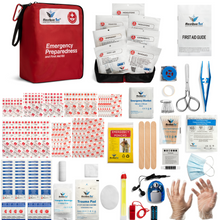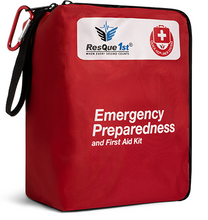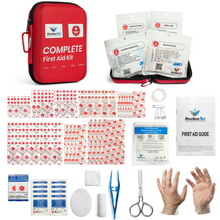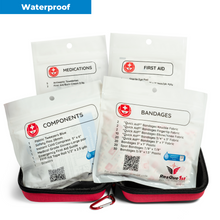
Good question. Afterall, tweezers are just for removing unwanted hair, right? Well, tweezers are used in all kinds of different ways and definitely have their place in any well-stocked First Aid Kit.
A Short History
As defined on Wikipedia, tweezers “are small tools used for picking up objects too small to be easily handled with the human fingers.” A tweezer is basically composed of two levers that are connected at one fixed end and have pincers at the other end. You squeeze the levers together to make the pincers get a hold of an object. Because tweezers are so small, they are operated by one hand.
The history of tweezers goes all the way back to predynastic Egypt - BEFORE 3100 BC. We know this because there are drawings of craftsmen using such a tool. As well, from 3000 BC onwards, in the lands of Mesopotamia and India, two strips of metal soldered together were commonly used. It is speculated that this tool was used to catch lice.
The name for this tool comes from the French étui, which means “small case”. So this small, specialized tool was named for the tiny carrying case it was typically found in.
Types of Tweezers And Their Uses
There are many different types of tweezers, each with their own particular shape, size and purpose. Some examples include: blunt tip, flat tip, angled tip, needle tip, triangular tip, and curved tip.
In addition to plucking hair, tweezers are used to build and manipulate electronic parts and mechanical parts for models and other precision mechanisms. They are used to manipulate stamps to prevent damage from handling, in kitchens to remove fine bones from fish or to perform delicate plating and to perform delicate medical procedures. More unusual uses for common tweezers include tightening loose screws on your glasses, threading a needle and designing a fancy manicure.
First Aid Uses of Tweezers
Life happens. And foreign bodies can pierce the skin. Foreign bodies fall into several categories:
- Wood/Organic: splinters, cactus spines, thorns, toothpicks
- Metallic: bullets, BBs, nails, sewing needles, pins, tacks
- Fiberglass
- Fishhooks, which may have a barbed point
- Glass
- Pencil lead (graphite)
- Plastic
Be aware. Not all foreign bodies should be automatically pulled out with a tweezer.
Call your doctor or go to the emergency room if:
- The foreign body is deeply embedded
- The foreign body is under a fingernail or toenail or in or near the eye
- The foreign body has a barb, such as a fishhook
- The foreign body is a bullet or a bb
- The foreign body is causing severe pain
- You are reluctant to take out the foreign body
- You can’t remove it
- The site looks infected. Signs will include redness, red streaks, swelling and pus
If the foreign object is small and you think you can remove it, you can do so.
General procedure for removing a small splinter or thorn:
- Get all of the equipment you need: tweezers, a needle, rubbing alcohol or antiseptic wipes, magnifying glass, antibiotic cream, bandage. Make sure you have enough light to be able to clearly see the sliver.
- Wash your hands with soap and water.
- Sterilize the tweezers with rubbing alcohol.
- Clean the skin around the sliver with rubbing alcohol or water and soap.
- Completely expose the end of the sliver with the needle.
- Grasp the end of the sliver firmly and pull it out at the same angle it went in.
- Apply antibiotic cream and a bandage.
Here is a video that demonstrates how to remove a splinter.
Foreign bodies can enter the skin at any time or anywhere. Children are particularly vulnerable. It is prudent to be prepared. You can easily do so by having an emergency kit in easy reach at home, at work, in the car, as part of your camping gear, etc. And be sure that the kit contains a tweezer.








